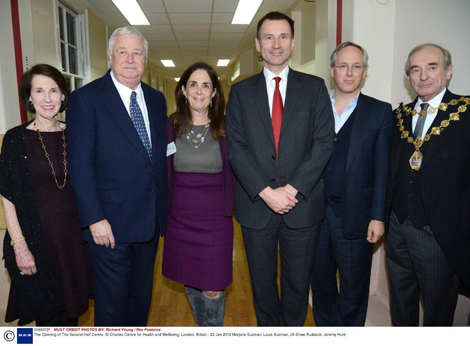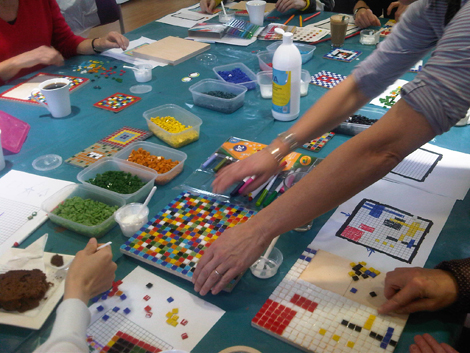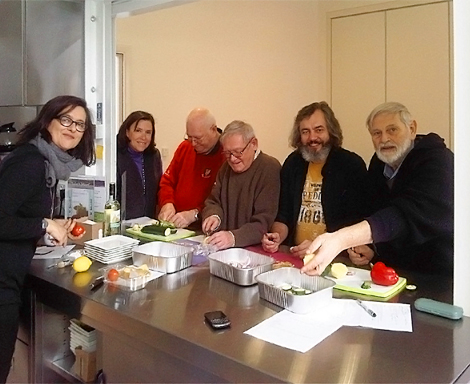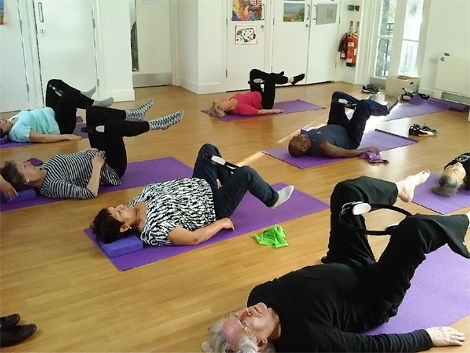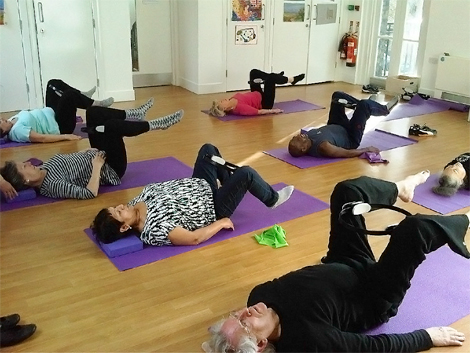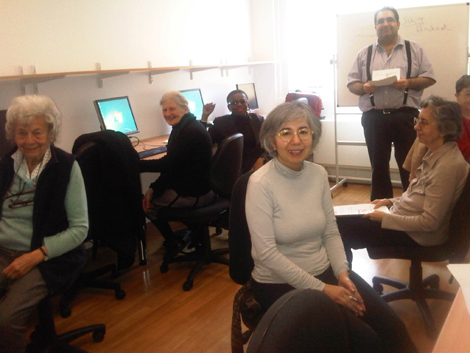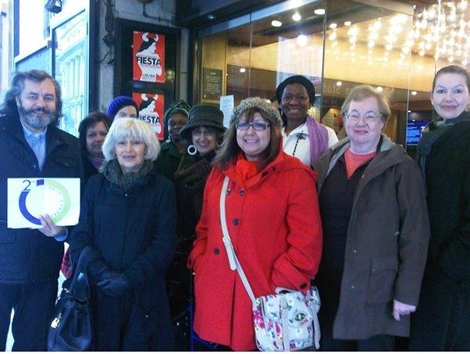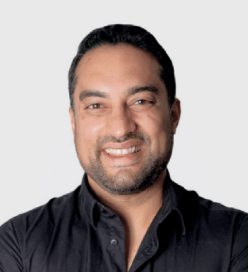“We see The Second Half Centre as a 21st century solution to the 21st century problem of an ageing population,” says its founder and chair Jill Shaw Ruddock, outlining its goal of improving the quality of people’s older years for the benefit of both individuals and society. “This isn’t a political issue – it’s cross-party politics. With population trends as they are, and the impact on society and the NHS, sustainable solutions have to be found.
“It’s all about changing the healthcare model to focus on proactive, preventative care – we can’t afford to have an NHS that doesn’t do this.”
Five a Day
Although understated when you first arrive, located down a corridor within the attractive old buildings of the NHS St Charles Centre for Health and Wellbeing in west London, as with so many of these projects it’s the attitude rather than the bricks and mortar that counts. And at The Second Half Centre, there’s a positive, ‘can-do’ attitude that’s driven from the top by its founder.
“Our target audience deserves respect,” explains the receptionist while I wait to meet Shaw Ruddock. “We don’t want to be like a community centre. We run The Second Half Centre like a business – bright, professional and to the highest standards.”
The 316sq m (3,400sq ft) centre is bright, cosy and welcoming, with lots of natural light and a vibrant green and purple colour scheme. Along a short hallway from reception is a bookshelf-lined welcome area – the lending library – with a kitchen/café beyond, a quiet zone, a handful of rooms in which classes are held, and a larger studio at the end that can be used for anything from group exercise to art classes. The centre also has the use of a large allotment area in a courtyard overlooked by the studio.
Meanwhile posters at the entrance introduce The Second Half philosophy. “This is what old looks like,” says one – illustrated by photos of Judi Dench, Maggie Smith, George Clooney, Nelson Mandela, Helen Mirren, Oprah Winfrey, Hillary Clinton… The Second Half Centre, it continues, is a place to discover the best half of your life.
So how does the centre go about helping people achieve this? Shaw Ruddock explains the background to the project: “I wrote a book, The Second Half of Your Life, which was published in February 2011 and which outlined my philosophy on ageing. That philosophy is based on what I call ‘Five a Day’ – the five things you have to do every day to ensure you age successfully.
“Firstly you need to have a passion. You also need a purpose greater than yourself. You need to exercise. You need to eat well, with good nutrition. And you need to stay connected to family and friends, because isolation changes your whole brain structure. Isolation is what makes people ill, and it’s the greatest problem facing older people these days.”
Indeed, SAGA estimates that more than 60 per cent of people over the age of 70 experience intense loneliness; they are more prone to a range of illnesses, from poor mental health to heart disease, as a result. “Everyone suffers from social isolation at some point in their life, whether that’s down to the whims of popularity at school or after having your first child and trying to adapt,” says Shaw Ruddock. “But I’ve seen what it does to older people and I wanted to do something about it. It’s a very widespread problem, but I don’t believe it’s hard to fix.”
Tackling isolation
Having written her book, Shaw Ruddock then set up a charity – The Second Half of Your Life Foundation, approved by the Charities Commission in May 2011 – to bring Five a Day to life. The next step was to find a venue in which her positive ageing philosophy could be brought to the public.
She continues: “In repositioning itself from a hospital to a centre for health and wellbeing, St Charles wanted to become a hub of the neighbourhood – somewhere people would go when they were well, not just when they were ill. But it didn’t really know how to go about this – how to overcome preconceptions and bring new people in to see what was on offer.
“It had some under-performing space which we agreed to rent from them in May 2012, and North West London PCT funded the renovation. On an ongoing basis, however, our funding comes primarily through trusts, foundations and mostly individual philanthropy.”
The centre opened on 29 October 2012 with a highly affordable offering courtesy of these funding streams. Membership is free until 1 June 2013, after which there will be a cost of just £20 a year for those who can afford to pay, or £10 for those on a bursary. Classes cost extra, but typically range from £2–5 a session. This is key, explains Shaw Ruddock, as North Kensington – where the centre is located – has high levels of social deprivation. Six out of 10 pensioners in the area also live alone.
“But isolation can happen to anyone,” says Shaw Ruddock. “My own parents were very isolated. It just creeps up on you and happens to people you wouldn’t expect. It’s not a class issue – it doesn’t discriminate. So we aren’t only targeting one section of the community: our centre is for everyone, from all social backgrounds. And I think the fact that we haven’t imposed class barriers by only targeting the less well-off – that we’ve aimed for a high quality offering that will appeal to all – means we’re doing it better than anyone.”
Creating a community
The Second Half Centre currently provides over 50 hours of activity a week, from IT classes to life coaching, theatre visits to cookery courses, art classes to gardening, group exercise to ‘brain fitness’ – current affairs sessions, for example – and visual history of art to history of literature.
“We use only the very best teachers,” says Shaw Ruddock. “We have head chefs from top London restaurants teaching our international cooking courses, for example, and the head gardener from Kensington Roof Gardens comes in to run the sessions in the allotment.
“Around 30 per cent of our teachers are volunteers – we’re lucky to have so many people who want to give back and share their expertise – and the rest we pay. This is how we’re different: we pay to get the best. We have to. To attract people from all socio-economic backgrounds, we need to have the best teachers. The volunteer teachers we have are fantastic and the best in their field; if they didn’t volunteer, we would have to pay them. Because that’s our model: everything has to be top quality.”
The idea isn’t simply to give members ‘old people’ activities to do: it’s about ensuring those aged over 50 continue to be challenged and supported in getting the most out of life. “The government tends to think older people can’t look after themselves, but in fact they just want to be given an opportunity to do precisely that,” says Shaw Ruddock. “This age group is also more, not less, open to change – they’re not set in their ways and they want to try new things.”
Sessions therefore range from ‘retooling for work and life’ classes – CV writing, strategic thinking and IT skills for those who want to return to work, for example, or social media classes to help people stay connected – through to confidence and wellbeing workshops. New sessions are also added to the timetable all the time, as relevant volunteers offer their services – from advice on relationships and sex in older age to adult parenting skills.
There’s also a strong group exercise schedule offering 13 different classes, including Zumba, salsa, stretch & tone, pilates, yoga, tai chi and ‘learn about your body through movement’ classes – the latter run by a former member of renowned ballet company Ballet Rambert.
Members can volunteer in the centre and mentor newcomers – there’s already a waiting list to do this – which helps foster a real sense of community. “Everyone talks about addressing isolation, but you need to create places that give people something that belongs to them,” explains Shaw Ruddock. Adding to this sense of community, members can have a coffee and socialise in the café after classes, while St Charles’ own restaurant downstairs has been given a Second Half makeover and seen custom rise significantly as a result, including the monthly – heavily subsidised – Second Half lunch.
The original target was for 170 members; by March there were already almost 700, with a revised target of 1,000. “But there’s no maximum capacity. If we get full, we’ll just find space to expand,” says Shaw Ruddock unequivocally. Growth has been driven through numerous channels, from GP referral to links with third sector organisations, marketing in local venues such as libraries and cinemas, and word of mouth. There has also been a great deal of media interest.
A national roll-out?
There is also interest in the model at a governmental level: Shaw Ruddock has been in discussions with the Department of Health (DH) for the past 18 months. “What we’re trying to do is create a template we can roll out nationally, and which ideally both the Department of Health and the Department for Work and Pensions will embrace,” she says.
“There are lots of under-performing properties within the NHS, and I think there could ultimately be around 30 of these centres across the country, starting with five or six in London to make sure it works perfectly. With our model, running costs would be less than £300,000 a year per centre, while the long-term savings for the NHS would be vast.
“As a charity, I also don’t think we should pay rent going forward. We’re turning around under-performing space and delivering what the country needs.
“It would be great for society if the roll-out could happen under the banner of the DH – if they could own it and take credit for it – to help drive a wholesale mindshift in society. In fact, we’re hoping to create the next Second Half Centre in the next 18 months through the DH. But we do need to make sure the concept isn’t watered down. High standards lie at the very heart of our success and must absolutely not be lowered.”








